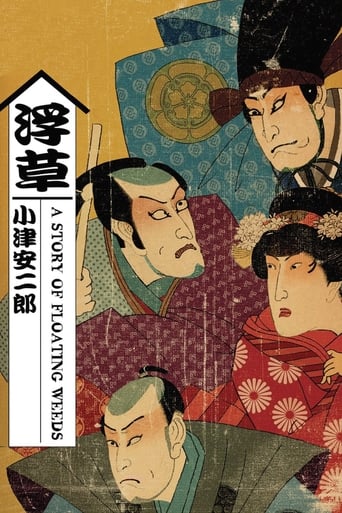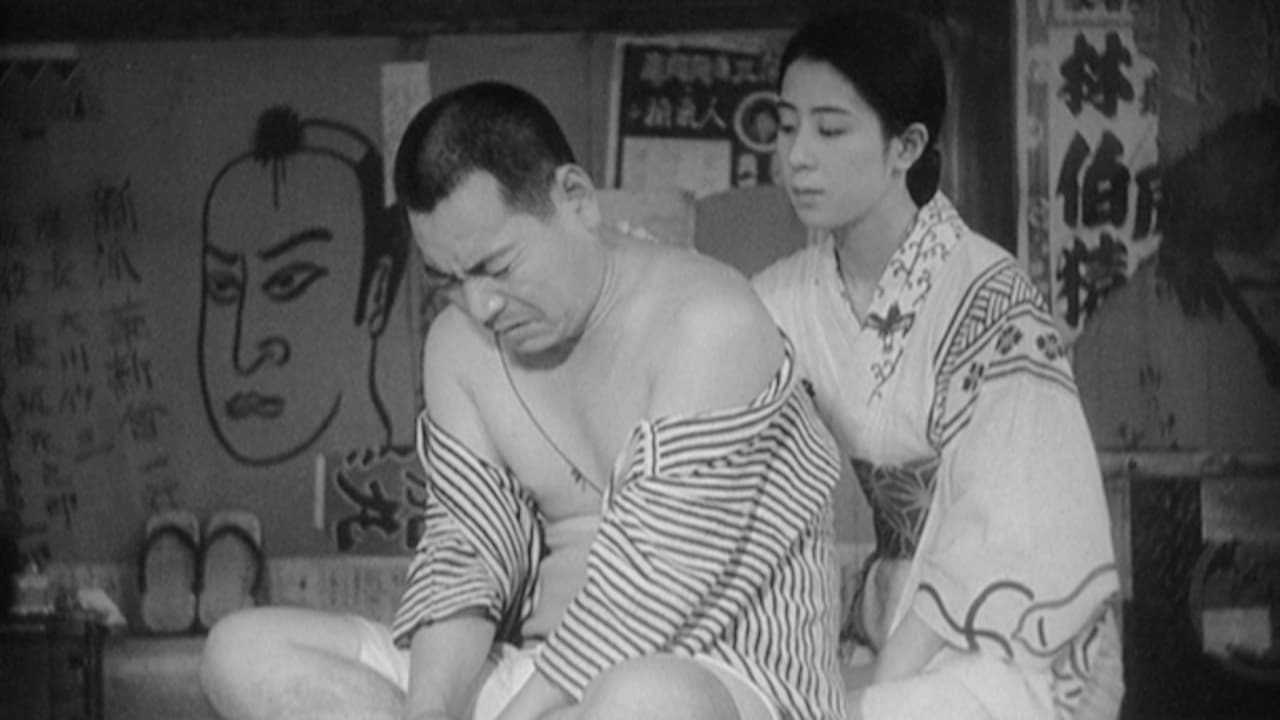WILLIAM FLANIGAN
Viewed on DVD. Intertitles = ten (10) stars; restoration = nine (9) stars. Director Yasujiro Ozu's first time at bat with this story line (he remade the same story--pretty much shot for shot--25 years later). From dramatic delivery and audience-engaging perspectives, this photo play is by far his best iteration (the first time is charm; the second just pretty to look at). Basic film building blocks (script, directing/editing, acting, and cinematography/lighting) are fully exploited and integrated here demonstrating that (when a director so desires) overall a film can be far greater than the sum of its technical components. And this movie's craftsmanship benefited greatly by being mounted at the peak of (and a bit beyond) the golden years of silent films in Japan (sound came into full bloom in Japan a few years after it occurred in the West). Acting can often be mesmerizing with performances touching but not crossing too far over into the blatant melodramatic. Film dynamics and audience interest are also enhance by eschewing long, slow takes and with the actor(s)/actress(es) who are in frame and facing the camera always the ones delivering the lines. No "back acting" in this movie. But what would become the director's other trademarks are already in play including: static camera placements (the camera seems to be just sitting there waiting for something (anything!) to happen); laundry lines; trains; and ugly overhead power lines. Opening credits are shot against a burlap backdrop as are all future films from this director. There are many memorable scenes including one of an actress casually strolling along the top of the curved rail of a train track in 3-4 inch high platform sandals! Intertitles seem okay (but others who read Japanese symbols better than I may disagree) and are just the right lengths. Restoration is quite good--the film looks much younger than it really is. However, all credits and titles exhibit frame jitters, some wear-related artifacts were ignored, and dark (and fade to dark) scenes often show age-related deterioration. The piano score was especially composed for this DVD, and is excellent. Highly recommended. WILLIAM FLANIGAN, PhD.
Andres Salama
Warning: Some plot points are revealed in this reviewOne of the last silent films by Japanese master Yasujiro Ozu (later remade by Ozu himself in in color in 1959) is about a traveling kabuki troupe arriving to a small town in Japan. The troupe's leader, Kihachi (Takeshi Sakamoto) uses the occasion to meet his old lover and their grown son (who believes Kihachi is his uncle), but his current lover Otaka (pretty, ethereal Rieko Yagumo) does not appreciate this when she learns about it, so she convinces a fellow actress of the troupe to seduce Kihachi's son. Kihachi, obviously, doesn't react well either when he learns about this. Reportedly, Ozu based this film on an American film from 1928 called "The Barker".There are few differences from the 1959 remake. For instance, here the kabuki troupe arrives to a mountain town in a train, instead of arriving to a coastal village by boat. Secondary characters are less shown. But mostly, both films are very similar, almost scene by scene, including the famous part where they are shouting over each other across a rainy street or the finale with Kihachi and his now reconciled lover drinking sake in the night train. The actor playing Kihachi, though, is about two decades younger than Ganjiro Nakamuro in the 1959 version.Overall, this movie is not, in my opinion, as accomplished as the remake, but is still very well worth seeing, and one of the highlights of Ozu's silent films.
mcguffin2001
I was able to see The Story of Floating Weeds for the first time recently, thanks to the Criterion Collection's DVD.I was led to it when I came across Roger Ebert's list of his ten favorite films (written some time ago).In his notes, Ebert claims Ozu shows us a "different cinematic language" but I find that kind of talk so much blather. Ozu uses his shots effectively to allow the actors to communicate the emotions being portrayed, especially necessary in this silent film.A third rate company of traveling actors returns to a town after four years. The leader of the troupe had abandoned his lady in this town years before in order to tour with his company. He has fathered a son by the woman, whom he visits whenever he can, but his paternity is kept secret from his son.What follows is the exposure of the secret and the effect it has on the lives of everyone involved, and some innocent bystanders as well.The camera is almost always objective, the acting style is somewhat less melodramatic than in American silent films. There are excellent performances by all.No time period is given for the story, but I have to assume it is earlier than the year the film was made (1934) because there are no automobiles, no radios, no telephones.The enjoyment of Floating Weeds lies in the story itself and the ability of the director to tell it compellingly. If you demand car chases or food fights, this is not for you.The Criterion DVD allows you to watch with or without the specially commissioned score. For first viewing, I recommend without.
alsolikelife
Remakably similar in structure yet different in tonal effect to Ozu's more famous 1959 remake, this story of a travelling troupe's last days in a seaside village was one of Ozu's first forays into a quiet, rural background, though it still feels brisk compared to the more staid and sumptuous remake. The depictions of stage life are more slapstick-oriented than in the remake (most notably in Tokkan Kozo's hilarious turn in a full-sized dog costume), but are counterbalanced by sensitive portrayals of all the characters, especially the great, dignified lead performance by Takeshi Sakamoto. The romantic interludes are as powerful as in the remake, though without employing the overt sensuality of on-screen kissing; instead there appears to be the use of a filter or gauze to give the scenes between the young couple an otherworldly effect, which gives more emphasis of the idea of the actress employed to seduce the troupe leader's son enacting a "performance", an idea that I would have like to have seen developed even further. Even so, this is a marvellous work with a set of wonders distinguishable from that of the remake.


 AD
AD

